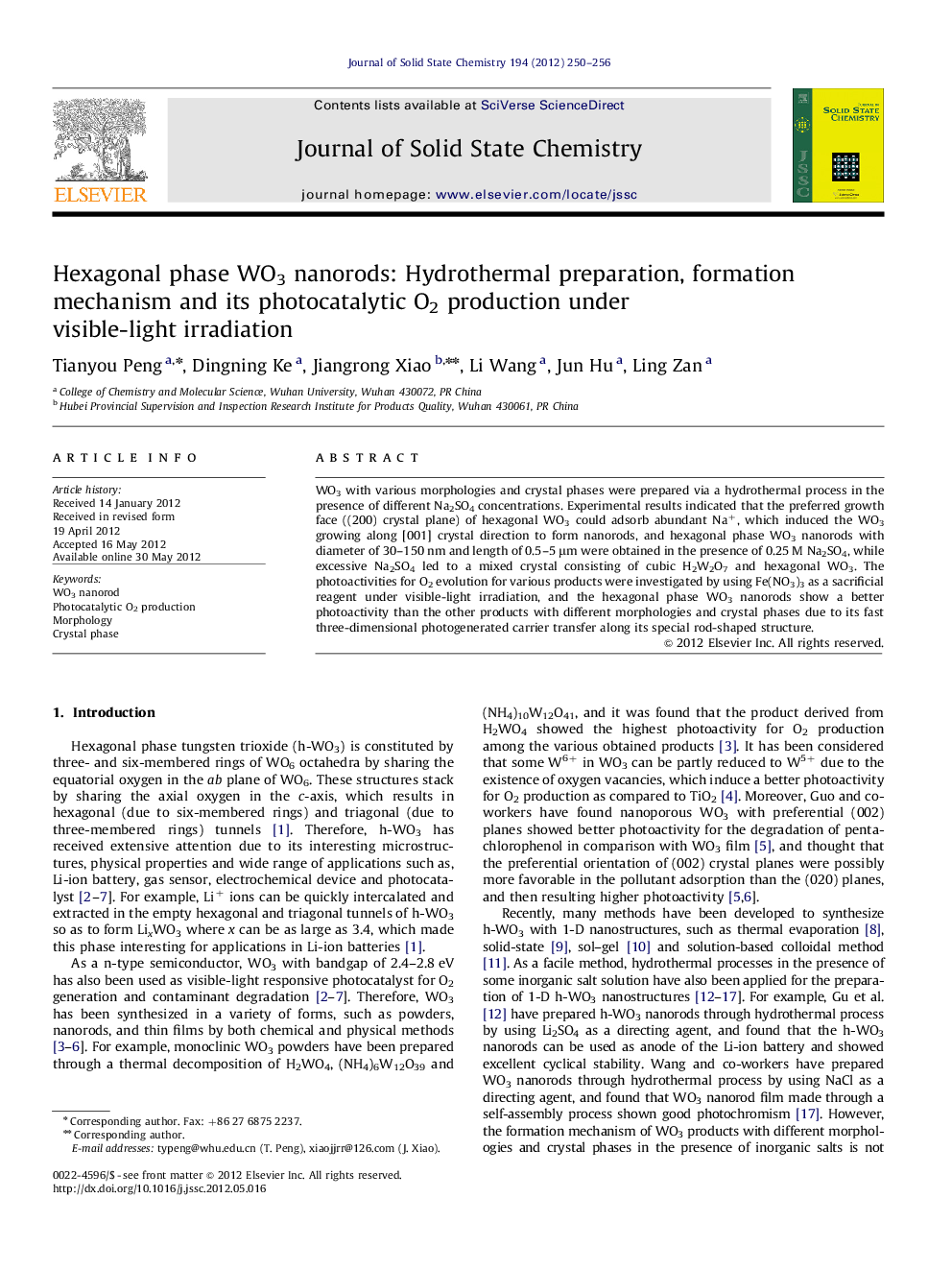| Article ID | Journal | Published Year | Pages | File Type |
|---|---|---|---|---|
| 1330276 | Journal of Solid State Chemistry | 2012 | 7 Pages |
WO3 with various morphologies and crystal phases were prepared via a hydrothermal process in the presence of different Na2SO4 concentrations. Experimental results indicated that the preferred growth face ((200) crystal plane) of hexagonal WO3 could adsorb abundant Na+, which induced the WO3 growing along [001] crystal direction to form nanorods, and hexagonal phase WO3 nanorods with diameter of 30–150 nm and length of 0.5–5 μm were obtained in the presence of 0.25 M Na2SO4, while excessive Na2SO4 led to a mixed crystal consisting of cubic H2W2O7 and hexagonal WO3. The photoactivities for O2 evolution for various products were investigated by using Fe(NO3)3 as a sacrificial reagent under visible-light irradiation, and the hexagonal phase WO3 nanorods show a better photoactivity than the other products with different morphologies and crystal phases due to its fast three-dimensional photogenerated carrier transfer along its special rod-shaped structure.
Graphical abstractAs a preferred growth plane, (200) plane of h-WO3 can adsorb abundant of Na+, which induces the WO3 growing along [001] direction to form nanorods with high length–diameter ratio.Figure optionsDownload full-size imageDownload as PowerPoint slideHighlights► WO3 with various morphologies were hydrothermally prepared. ► Hexagonal WO3 nanorods with diameter of 30–150 nm can be obtained from 0.25 M Na2SO4 solution. ► Hexagonal WO3 nanorods show a better photoactivity than the other products. ► The good photoactivity can be due to its fast carrier transfer along its rod-shaped structure.
